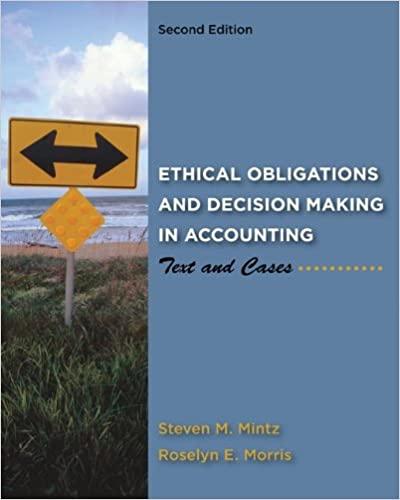Answered step by step
Verified Expert Solution
Question
1 Approved Answer
unting equation may be expressed as A . Assets + Liabilities = Owner's Equity B . Assets Liabilities = Owner's Equity C . Assets =
unting equation may be expressed as
A Assets Liabilities Owner's Equity
B Assets Liabilities Owner's Equity
C Assets Revenues Liabilities
D Assets Equities Liabilities
B
A cash
B wages payable
C inventory
D investments
A
A
B
C
D
A
A decrease an asset, decrease a liability
B increase an asset, increase owner's equity
C increase an asset, increase a liability
Instructions: Read each of the following multiple choice questions carefully. Enter the correct answer in the highlighted
and underlined cell corresponding to that question. Use capital letters for your responses A B C or D There is only one
correct answer to each question. The assignment is open book and open note but is noncollaborative: This assignment
must be your own work. The assignment is not timed but it is due by the date indicated in the syllabus.
Note: DO NOT change the formatting of this spreadsheet. Do not add columns or rows. Simply place your answer in the
appropriate cell.
Critical Assignment: This is the Critical Assignment for the course and must be passed at an acceptable rate in order to
pass the course.
Objective : Describe and use the accounting equation
Which of the following is not an asset?
The assets and liabilities of the company are $ and $ respectively. Owner's equity
should equal
A business paid $ to a creditor in payment of an amount owed. The effect of the transaction on
the accounting equation was to
D increase an asset, decrease another asset
A
A increase
B decrease
C decrease
D increase
Questions relate to CSO
D Which of the following is true about T accounts?
A The left side of a T account is called the credit side.
B Transactions are first recorded in T accounts and then posted to the journal.
C The right side of a T account is called the debit side.
D The left side of a T account is called the debit side.
B The balance of an account is determined by
A always subtracting the debits from the credits
B
C always subtracting the credits from the debits
D adding all of the debits to all of the credits
D
Accounts payable Fees earned
Accounts receivable Insurance expense
Prepaid insurance Land
Cash Wages expense
Drawing Capital
Total assets are
A
If total liabilities decreased by $ during a period of time and owner's equity increased by
$ during the same period, the amount and direction increase or decrease of the period's
change in total assets is
Objective : Prepare twocolumn journal entries
Objective : Prepare and utilize taccounts for journal entries and decision making
Objective : Prepare a trial balance in good form
adding all of the debits, adding all of the credits, and then subtracting the smaller sum from the larger
sum
The accounts in the ledger of Monroe Entertainment Co are listed below. All accounts have normal
balances.
B
C
D
B Which of the following entries records the payment of an account payable?
A debit Accounts Receivable; credit Cash
B debit Accounts Payable; credit Cash
C debit Cash; credit Supplies Expense
D debit Cash; credit Accounts Payable
D
Accounts Payable Fees Earned
Accounts Receivable Insurance Expense
Prepaid Insurance Land
Cash Wages Expense
Drawing Capital
Prepare a trial balance. The total of the debits is
A
B
C
D
Questions relate to CSO
C When preparing the statement of owner's equity, the beginning capital balance can always be found
A in the statement of cash flows
B in the Balance Sheet columns of the work sheet
C in the general ledger
D in the Income Statement columns of the work sheet
A Accumulated Depreciation appears on the
The accounts in the ledger of Monroe Entertainment Co are listed below. All accounts have normal
balances.
Objective : Identify the elements of the income statement, statement of owners equity retained earnings and
balance sheet
Objective : Prepare an income statement, statement of owners equity retained earnings and balance sheet in
good form
A balance sheet in the property, plant, and equipment section
B income statement as an operating expense
C balance sheet in the longterm liabilities section
D balance sheet in the current assets section
Step by Step Solution
There are 3 Steps involved in it
Step: 1

Get Instant Access to Expert-Tailored Solutions
See step-by-step solutions with expert insights and AI powered tools for academic success
Step: 2

Step: 3

Ace Your Homework with AI
Get the answers you need in no time with our AI-driven, step-by-step assistance
Get Started


